-
About
- About Listly
- Community & Support
- Howto
- Chrome Extension
- Bookmarklet
- WordPress Plugin
- Listly Premium
- Privacy
- Terms
- DMCA Copyright
- © 2010-2025 Boomy Labs

Listly by Umbrella Health Care Systems
The lungs are a pair of spongy, air-filled organs located on either side of the chest (thorax). The trachea (windpipe) conducts inhaled air into the lungs through its tubular branches, called bronchi. The bronchi then divide into smaller and smaller branches (bronchioles), finally becoming microscopic.
The bronchioles eventually end in clusters of microscopic air sacs called alveoli. In the alveoli, oxygen from the air is absorbed into the blood. Carbon dioxide, a waste product of metabolism, travels from the blood to the alveoli, where it can be exhaled. Between the alveoli is a thin layer of cells called the interstitium, which contains blood vessels and cells that help support the alveoli.
https://www.umbrellamd.com/

Your lungs work all day and night, whether you’re awake or asleep. That’s 20,000 or so breaths per day! By the time you’re 50, you have taken around 400 million breaths. Diseases like COVID-19, which can attack the lungs, shine a light on how important these organs are. They get oxygen into your blood and into every cell in your body. And they help get rid of carbon dioxide (CO2), which is toxic if you have too much.
https://www.umbrellamd.com/
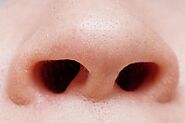
When you breathe in air through your nose, tiny hairs help rid it of dust and germs. It passes through your sinuses (hollow bony spaces around your nose and eyes), which help get air to the right temperature and moisture level. Air also enters through your mouth, especially during exercise or if your nose is stuffy. All of it goes through your throat and into your windpipe, which splits into two bronchial tubes -- one for each lung.
https://www.umbrellamd.com/

In your lungs, each bronchial tube branches into a maze of smaller and smaller tubes. Tiny hairs inside (cilia) help trap dust and germs that you cough up, sneeze out, or swallow. The smallest tubes are called bronchioles. These end in tiny air sacs called alveoli. This is where your lungs deliver oxygen to your blood and take back carbon dioxide. Doctors call this system of tubes and sacs the bronchial tree.
https://www.umbrellamd.com/
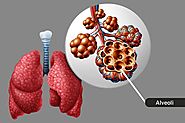
You have hundreds of millions of these tiny delicate sacs in each lung. Inside each one are minute blood vessels called capillaries, through which oxygen gets into your blood and CO2 is taken out. When you have lung disease -- whether from smoking, chemicals, mold, bacteria, or a virus like the one that causes COVID-19 -- it’s often the alveoli that start to break down.
https://www.umbrellamd.com/
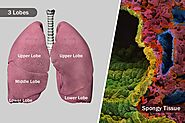
Your lungs are made of a special sponge-like tissue that stretches easily and keeps its shape without damage. Your right lung is divided into three sections, or “lobes.” Each lobe expands like a balloon when you breathe in and deflates when you breathe out. Your left lung is a bit smaller, with two lobes, with your heart nearby. A thin lining called the pleura covers both lungs.
https://www.umbrellamd.com/
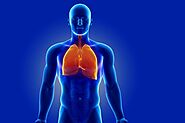
The chest cavity (thorax) is a space that houses and protects your heart and lungs. Your ribs and attached muscles make up the top and sides. A large muscle called the diaphragm makes up the bottom. In the center is the mediastinum, which holds your heart, thymus gland, and other organs. It also separates the two lungs so that if one is punctured or damaged, the other may still work on its own.
https://www.umbrellamd.com/
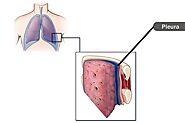
The pleura is a thin, slippery membrane that encases the outside of each separate lobe of the lungs and lines the inside layer of your chest cavity. A thin layer of fluid separates the pleural membranes from each other. This makes it easier for your lungs to continue to slide smoothly and evenly when they expand, contract, and shift over different areas of your chest cavity as you move around.
https://www.umbrellamd.com/
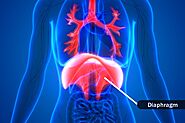
The powerful dome-shaped diaphragm at the bottom of your chest cavity creates suction as it pushes down toward your gut. At the same time, muscles in your chest pull your ribs out and up to make more room for your lungs to expand. Together, this draws air in through your nose and mouth. To breathe out, your diaphragm pushes back up and your chest wall muscles relax to force CO2-rich air out of your lungs.
https://www.umbrellamd.com/

Your breathing (respiration) rate is the number of breaths your lungs take per minute. You are in the normal range between 12 and 20 breaths per minute. More or less than that could be a sign of a health problem that may or may not directly relate to your lungs. This includes heart failure, anxiety, asthma, pneumonia, drug abuse, lung disease, and other illnesses. Your doctor can help you find the source of the problem.
https://www.umbrellamd.com/
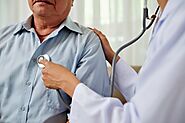
As you get older, changes can happen that make it harder for your lungs to do their work:

Tobacco smoke can narrow and inflame your airways and make it harder to breathe. It often irritates your lungs and can cause a nagging cough. Over time, the smoke destroys lung tissue and might cause cancer. It’s the No. 1 cause of lung cancer and COPD, a disease that slowly destroys the tiny sacs in your lungs (alveoli) that transfer oxygen to your blood.
https://www.umbrellamd.com/


It’s not just good for your heart and keeping a healthy body weight. It’s also good for your lungs, even if you have a lung condition. If the gym’s not your thing, a walk, jog, or regular tennis game can do the trick. Aim for about 30 minutes, five times a week. Talk to your doctor about your exercise plan if you already have breathing problems or other medical conditions.
https://www.umbrellamd.com/
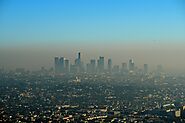
The air quality index (AQI) tracks pollution that may come from factories, fires, cars, dust, pollen, and other sources on a scale from 0 to 500. Get local levels on the news or check online. Dirty air could affect anyone, but high levels are especially serious for children, adults over 65, and people who are ill. When levels are very high, it’s often safer to stay indoors as much as possible.
https://www.umbrellamd.com/

Umbrella Health Care Systems provide complete solution for health related problems.
https://www.umbrellamd.com/